By Lee Copland, Managing Director, Maxxess EMEA | August 22nd, 2023
In the dynamic landscape of 2023, the full digitization of access control and visitor management holds immense promise for major public sector organizations and expansive enterprises with multiple dispersed sites and personnel. With an emphasis on duty of care and operational efficiency, this forward-looking approach is gaining traction.
The public sector is experiencing a shift towards ambitious digitization, uniting physical security and safety processes that were previously separate. The goal is to seamlessly link physical access with digital corporate data systems, integrating functions like HR through platforms such as Microsoft Active Directory.
Comprehensive Benefits for All Sizes
The advantages of this digital transformation extend to organizations of all sizes. Whether it’s managing staff, contractors, guests, or the general public, the emerging generation of digitized solutions offers enhanced efficiency and holistic management. Even medium-sized and single-site entities stand to benefit.
Individual users are experiencing a seamless transition to digitized building access, mirroring the simplicity of network access. While the technology behind this shift is proven, the post-pandemic era has amplified the ambition to achieve fully integrated access solutions.
The security sector is on the brink of significant progress, despite limited involvement from established access control vendors. ICT specialists are leading the charge due to their cross-disciplinary expertise in creating seamless operating systems. This shift is expanding the market with cloud-based, flexible, and modular solutions.
Adept Developers Paving the Way
Agile developers are spearheading the most innovative changes. Larger-scale trials are poised to impact early adoption sectors like transportation, hospitality, offices, and healthcare. The efficiency gains from automating access and ID authorizations, resource allocation, guest management, and more are poised to make a substantial difference.
In the EMEA public sector, a new wave of connection and collaboration is sweeping away outdated competition-based models. Driven by both cost considerations and a desire for better outcomes, manual processes are being digitized to streamline workflows, reducing pressure on staff.
While decentralization still holds value, the pandemic underscored the benefits of collaborative approaches. Integrated care solutions, facilitated by collaboration between organizations, are shaping new healthcare paradigms. Patients benefit from applications like Patient Access, which centralize services and healthcare advice.
Seamless Integration, Shared Efficiency
Collaborative innovation results in shared benefits. With digitized access and visitor management, professionals like social workers and care providers can seamlessly access facilities. This eliminates redundant authorization procedures and streamlines the flow of employees between buildings and facilities.
The landscape for enhanced access control and visitor management solutions is evolving rapidly. The potential for substantial savings is driving this transformation. As the market shifts, organizations across sectors are poised to reap the rewards of a more connected and efficient future.

